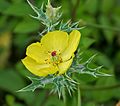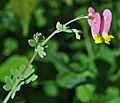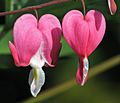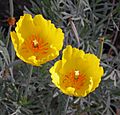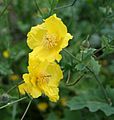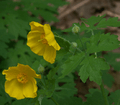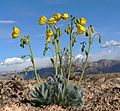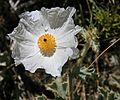Papaveraceae facts for kids
Quick facts for kids Papaveraceae |
|
|---|---|
 |
|
| Papaver rhoeas | |
| Scientific classification | |
| Kingdom: | |
| Division: | |
| Class: | |
| Order: | |
| Family: |
Papaveraceae
|
| genera | |
|
see text |
|
Papaveraceae is a family of flowering plants. It is also known as the "poppy family". Most plants in this family are herbs, which means they have soft stems. However, some are shrubs or small trees.
Contents
What are Poppy Plants Like?
Poppy plants can live for different lengths of time. Some are annuals, meaning they live for only one growing season. Others are biennials, living for two years. Many are perennials, which means they live for more than two years.
Most poppy plants are soft and green, but a few are woody shrubs or evergreen trees. They all produce a special liquid called latex, which is like sap. This latex can be milky or watery, and it might be white, yellow, or even red. It comes from tiny tubes found throughout the plant.
Leaves of Poppy Plants
The leaves of poppy plants are usually simple. They grow one after another along the stem. Sometimes, they grow in a circle around the stem. The leaves have small stems called petioles. They are often deeply cut or divided into many parts. Poppy plants do not have stipules, which are small leaf-like parts found at the base of some leaves.
Poppy Flowers and How They Reproduce
Poppy flowers are usually hermaphroditic. This means each flower has both male and female parts. Most are pollinated by insects. This is called entomophilous pollination. Poppy flowers do not have nectar, which is what usually attracts insects. A few types are pollinated by wind, which is called anemophilous pollination.
The flowers have distinct outer green parts called sepals. They also have colorful petals. The flowers are usually medium to large in size. Sometimes, a single flower grows at the end of a stem. Other times, flowers grow in clusters. Poppy flowers usually do not have a smell and are regular in shape.
Each flower has many stamens, which are the male parts that produce pollen. There are usually between 16 and 60 stamens. The female part of the flower is called the pistil. It has an ovary that sits above the other flower parts. The ovary is where the seeds will develop.
Fruits and Seeds
The fruit of a poppy plant is usually a capsule. This is a dry fruit that is not fleshy. When the fruit is ripe, it breaks open to release the tiny seeds. The seeds can be released through small pores, through splits between sections, or by valves that open up. Poppy plants produce many small seeds. Inside the seeds, there is oily food material that helps the new plant grow.
Images for kids
-
Mexican prickly poppy (Argemone mexicana)
-
Pale corydalis (Capnoides sempervirens)
-
Fringed bleeding-heart (Dicentra eximia)
-
Golden eardrops (Ehrendorferia chrysantha or Dicentra chrysantha)
-
Earth smoke (Fumaria officinalis)
-
Channel Island tree poppy (Dendromecon harfordii)
-
Bloodroot (Sanguinaria canadensis)
-
Wood poppy (Stylophorum diphyllum)
-
Creamcups (Platystemon californicus)
-
Bearpaw poppy (Arctomecon californica)
-
Flat-bud prickly poppy (Arctomecon munita)
-
Persian poppy (Papaver bracteatum)
-
Matilija poppy (Romneya coulteri)
See also
 In Spanish: Papaveráceas para niños
In Spanish: Papaveráceas para niños



